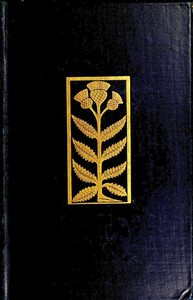The ecclesiastical architecture of Scotland from the earliest Christian times…
"The Ecclesiastical Architecture of Scotland from the Earliest Christian Times to the Seventeenth Century" by David MacGibbon and Thomas Ross is a scholarly historical account written in the late 19th century. This work examines the development and characteristics of ecclesiastical architecture in Scotland, emphasizing its evolution from early Christian times through to the late medieval period. The book meticulously looks at various architectural styles, significant buildings, and their historical context. The opening
of the work sets the stage for an in-depth exploration of Scottish ecclesiastical architecture, focusing on the transition from the Middle Pointed to the Late Pointed periods. It details how architectural elements reflected both local traditions and external influences, particularly from England and France. The authors discuss the lack of a distinct break in styles between these two periods, highlighting notable examples and features that define the Late Pointed style, such as pointed barrel vaults and unique construction techniques that set Scottish architecture apart from its European counterparts. (This is an automatically generated summary.)
Read now or download (free!)
| Choose how to read this book | Url | Size | ||||
|---|---|---|---|---|---|---|
| Read online (web) | https://www.gutenberg.org/ebooks/65014.html.images | 1.3 MB | ||||
| EPUB3 (E-readers incl. Send-to-Kindle) | https://www.gutenberg.org/ebooks/65014.epub3.images | 56.7 MB | ||||
| EPUB (older E-readers) | https://www.gutenberg.org/ebooks/65014.epub.images | 56.5 MB | ||||
| EPUB (no images, older E-readers) | https://www.gutenberg.org/ebooks/65014.epub.noimages | 461 kB | ||||
| Kindle | https://www.gutenberg.org/ebooks/65014.kf8.images | 56.7 MB | ||||
| older Kindles | https://www.gutenberg.org/ebooks/65014.kindle.images | 56.2 MB | ||||
| Plain Text UTF-8 | https://www.gutenberg.org/ebooks/65014.txt.utf-8 | 843 kB | ||||
| Download HTML (zip) | https://www.gutenberg.org/cache/epub/65014/pg65014-h.zip | 54.7 MB | ||||
| There may be more files related to this item. | ||||||
Similar Books
About this eBook
| Author | MacGibbon, David, 1831-1902 |
|---|---|
| Author | Ross, Thomas, 1839-1930 |
| Title | The ecclesiastical architecture of Scotland from the earliest Christian times to the seventeenth century; vol. 3/3 |
| Alternate Title | The ecclesiastical architecture of Scotland from the earliest Christian times to the 17th century; vol. 3/3 |
| Note | Reading ease score: 72.5 (7th grade). Fairly easy to read. |
| Note | Wikipedia page about this book: https://en.wikipedia.org/wiki/The_Ecclesiastical_Architecture_of_Scotland |
| Credits | Chuck Greif and the Online Distributed Proofreading Team at http://www.pgdp.net (This file was produced from images available at The Internet Archive) |
| Language | English |
| LoC Class | NA: Fine Arts: Architecture |
| Subject | Church architecture -- Scotland |
| Category | Text |
| EBook-No. | 65014 |
| Release Date | Apr 7, 2021 |
| Copyright Status | Public domain in the USA. |
| Downloads | 235 downloads in the last 30 days. |
| Project Gutenberg eBooks are always free! | |

